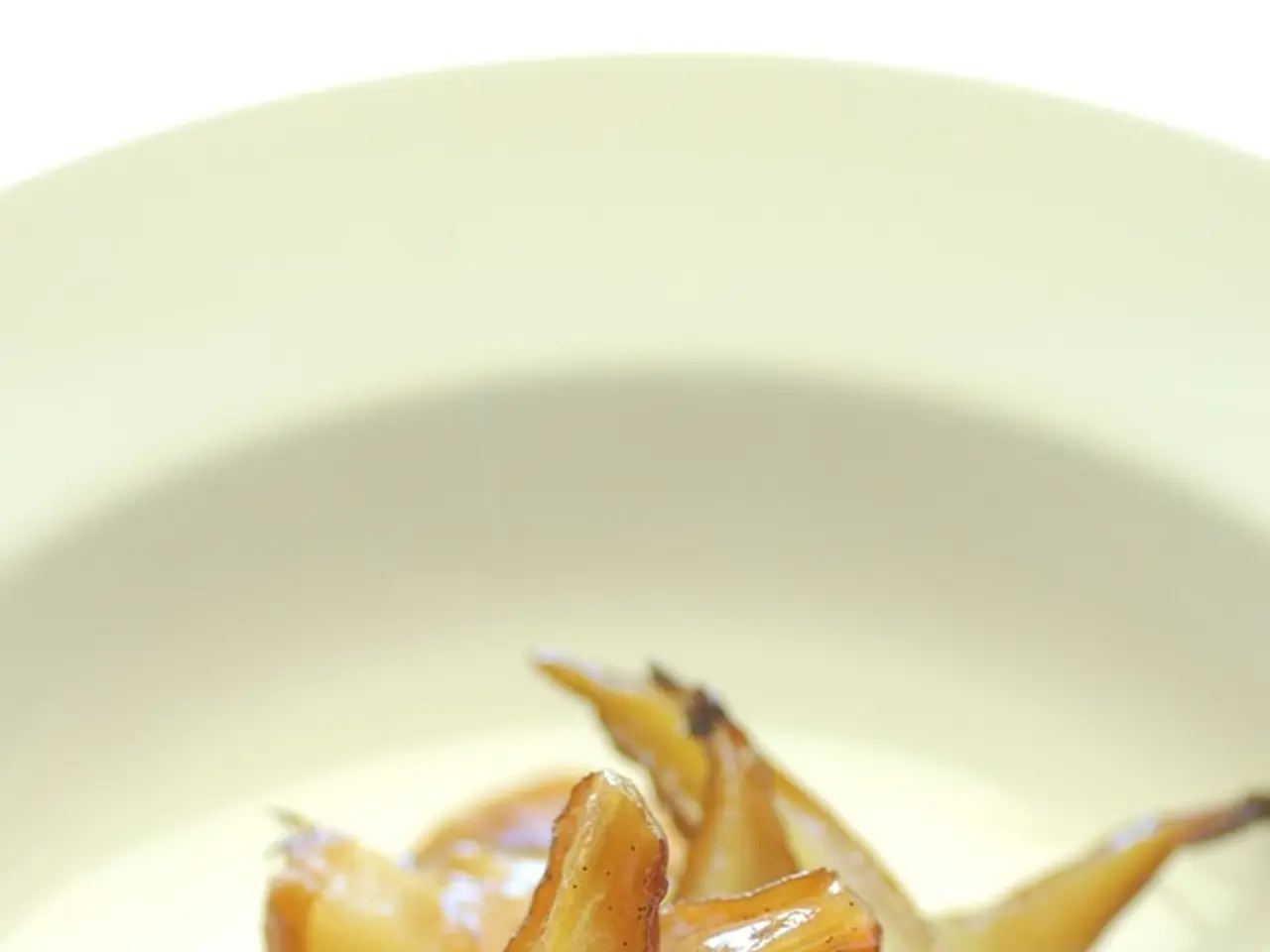Low-Residue Diet Explanation and Functioning Mechanisms
A low residue diet is a specific eating plan that limits high-fiber foods to reduce the amount of undigested material passing through the intestines. This diet is designed to help clear or heal the colon by allowing time for bowel rest.
What is Residue and Why is it Important?
In the context of a low residue diet, "residue" refers to food that is low in crude fiber but contributes to waste. Foods that contribute to residue but are low in fiber include meats, fats, and dairy products. However, it's essential to note that fiber, also known as roughage or crude fiber, is a carbohydrate the body cannot break down into sugar molecules.
Who Needs a Low Residue Diet?
Medical professionals typically prescribe a low residue diet to patients with gastrointestinal conditions requiring reduced bowel content. This includes individuals experiencing a diverticulitis flare-up, preparing for or recovering from bowel surgery, having inflammatory bowel disease (IBD) like Crohn's, or having acute diverticulitis.
What Foods are Included and Excluded?
A low residue diet typically includes refined grains such as white bread, white rice, pasta, and low-fiber cereals (e.g., cream of wheat). It also includes soft or cooked fruits without skins or seeds, applesauce, bananas, canned fruits, and fruit juices with no pulp. Cooked or mashed vegetables without skins, stems, or seeds, and clear vegetable juices without pulp are also part of this diet. Proteins such as skinless fish, turkey, chicken, eggs, tofu, smooth nut butters, and soft cheeses like cottage cheese and yogurt without seeds or chunks are also included. Milk and dairy products are usually allowed if tolerated.
On the other hand, raw fruits and vegetables, especially those with skins, seeds, or high fiber content, whole grains and high-fiber cereals, tough meats, fried or greasy foods, spicy foods, red and processed meats, foods high in refined sugars and processed foods are excluded or limited.
Benefits and Risks
The potential benefits of a low residue diet include allowing for "bowel rest" and possibly helping decrease painful symptoms of IBD. However, possible risks include constipation, nutrient deficiency, limited supporting evidence, and evidence against its effectiveness.
A Sample Menu
A sample menu for someone following a low residue diet might include toasted white bread with smashed avocado and poached eggs for breakfast, couscous with tofu or lean chicken breast for lunch, skinless and boneless salmon fillets baked in lemon juice and olive oil for dinner, and a chocolate chip cookie for dessert.
Conclusion
In summary, the low residue diet aims to minimize intestinal workload by avoiding high-fiber and hard-to-digest foods while allowing easily digestible, low-fiber foods to support nutrition during gastrointestinal distress or medical treatment. It's crucial to remember that this diet should only be followed under the supervision of a healthcare professional to ensure adequate nutrition.
References: [3][4][2]
Some medical professionals may still recommend low fiber therapy in cases of active IBD flare or colonoscopy preparation.
Soluble fiber, found in foods such as oatmeal, nuts, lentils, chia seeds, apples, and blueberries, can help lower glucose levels and lower blood cholesterol.
Insoluble fiber, found in whole grains, legumes, leafy greens, nuts, seeds, and fruit, is indigestible and helps food move through the digestive system, encouraging bowel regularity and preventing constipation.
The goal of reducing bowel activity in a low residue diet is to promote intestinal healing by minimizing the intake of indigestible material.
Acceptable foods on a low residue diet may include refined breakfast cereals, products made from white flour, well-cooked white rice and rice noodles, eggs, boneless fish, lean meat, seafood, vegetable juices or clear soups free of seeds or skins, fruit juice, avocado, skinless stewed or canned fruit, sieved pureed fruit, plain cakes, custard, and chocolate chip cookies.
High residue foods to avoid on a low residue diet include whole grain cereals, nuts and seeds, all milk, milk alternatives, and dairy products, brown rice, quinoa, and whole wheat pasta, small, boned fish, vegetable stalks, skins, seeds, and peels, fruits with seeds or pips, smoothies with seeds or skins, corn, legumes and pulses, potato skins, and peanut butter.
The concept of a low residue diet revolves around managing nutrient intake while reducing high-fiber foods, particularly those that contribute to waste, to aid in gastrointestinal healing. This diet is often prescribed for individuals with chronic diseases, medical conditions, or undergoing surgery that necessitates reduced bowel content. Adequate nutrition during this period is crucial, and thus, the diet includes refined grains, certain fruits, cooked vegetables, proteins, and dairy products, while avoiding raw fruits and vegetables, whole grains, high-fiber cereals, tough meats, fried or greasy foods, spicy foods, red and processed meats, foods high in refined sugars, and processed foods. When followed correctly, it may provide benefits such as bowel rest and decreased symptoms of inflammatory bowel disease. However, potential risks include nutrient deficiency, constipation, and conflicting evidence regarding its effectiveness.




